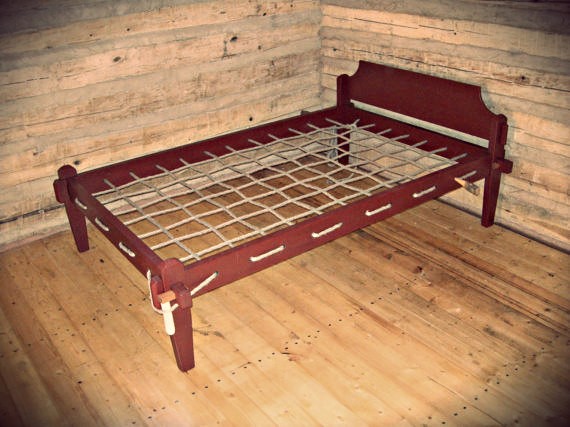Written by Rebecca Karstensen, Wylie House Museum Assistant and Docent
Edited by Jean Graves, Associate Instructor and PhD candidate, Indiana University and Carey Beam, Director, Wylie House Museum
Feature photo from nameberry.com
Here at the Wylie House Museum and at other house museum across the country, we docents love to share old stories and sayings that we’ve learned and acquired over the years. One of my personal favorite stories is the history of the saying “sleep tight, don’t let the bed bugs bite”. The typical presentation of the story follows along these lines:
In the 1800s and early 1900s, mattresses were held on bed frames using a woven rope design. These ropes needed frequent tightening to ensure a taut, firm mattress for a good night’s sleep. Hence, the phrase “sleep tight” was born. The mattresses were often stuffed using straw, shredded corn husks, or down feathers. These materials attracted bed begs, and so over time it became a common phrase to say “sleep tight, don’t let the bed bugs bite.”

A typical rope bed frame. From pinterest.com
Stories and myths like this one are very common among house museums. We love to leave visitors with new, exciting information that they can share with the rest of the world, and so it’s quite easy for false information to spread rapidly across the house museum community.
Such is the case with the story of sleeping tight.
To begin, I would like to confirm that rope beds did, in fact, need tightening, so my intention here is not to disprove this part of our story. If you’d like to learn more about the roping process, I would suggest this video or this article.
Rope beds were invented in the 16th century and fell out of fashion quickly after the invention of the coil spring mattress in 1865. Gary Martin’s research for The Phrase Finder has revealed that the first recorded use of the phrase “sleep tight” wasn’t until 1866 in Susan Bradford Eppes’s journal entitled Through Some Eventful Years. She writes on May 2, “Goodbye little Diary. ‘Sleep tight and wake bright,’ for I will need you when I return.” Therefore, the late use of this phrase in comparison to the invention of rope beds signals that it must have some other origin.
But, what could that origin be? Let’s take a look into the etymology (i.e. the study of the origin of words and the way in which their meanings have changed throughout history) of the word ‘tight’. According to the Oxford dictionary, the closely related adverb ‘tightly’ can also mean ‘safely’ or ‘soundly’. Since it sounds a bit catchier and poetic to say two one-syllable words as “sleep tight” instead of the awkward 3-syllable “sleep tightly,” that might explain why the suffix –ly was dropped from the word.
In today’s culture, we have several other uses of the word ‘tight’ that support this new hypothesis of the history of ‘sleep tight’. For example, in American slang we say that we are ‘tight’ with someone to indicate that we are familiar with them or close with them. ‘Tight’ can also be synonymous with ‘snug’, such as when your pants are too tight after eating one too many gooey fudge brownies. When we settle in to bed each night, many people enjoy wrapping themselves up in the covers to experience this snuggly feeling that seems oppressive when referring to our jeans but cozy when it’s bedtime.
We like to feel safe and cozy during sleep (after all, we can’t control what happens in the world around us as we dream), so sleeping ‘tight’ probably relates more to those connotations of snugness and safety, especially in reference to security from bedbugs or other nighttime creatures. This idea seems more reasonable than the fact that the ropes on early beds needed to be tight to ensure a good fit. This argument also helps to explain why people used the phrase long after rope beds fell out of use.
The best part about historic house museums is that we get to continually learn and explore these new topics and share them with our guests! Do you have any other theories? Connect with us on Twitter, Facebook, or Instagram, or email us at libwylie@indiana.edu. We would love to hear what you have to say.
3 Comments
Thanks. Great info.
In Scotland last year at a visit to one of many homes, I was informed that “bedbugs” were the tool that was used to tighten the ropes – as the rope tightened the tension might cause the bedbug to snap back and “bite” the user! Certainly like that idea better than the other!
Arthur Clevenger
Thanks